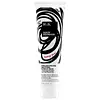What's inside
What's inside
 Key Ingredients
Key Ingredients

No key ingredients
 Benefits
Benefits

 Concerns
Concerns

 Ingredients Side-by-side
Ingredients Side-by-side

Water
Skin ConditioningCetearyl Alcohol
EmollientPropylene Glycol
HumectantIsodecyl Neopentanoate
EmollientPEG-150/Decyl Alcohol/Smdi Copolymer
Spirulina Maxima Extract
SmoothingButyrospermum Parkii Butter
Skin ConditioningSclerocarya Birrea Seed Oil
HumectantHydrolyzed Corn Protein
Skin ConditioningHydrolyzed Soy Protein
HumectantHydroxyethyl Cetearamidopropyldimonium Chloride
Skin ConditioningBehenyl Alcohol
EmollientSteareth-2
EmulsifyingPolyquaternium-55
Steareth-20
CleansingDisodium EDTA
Ethylhexylglycerin
Skin ConditioningButylene Glycol
HumectantStearamidopropyl Dimethylamine
EmulsifyingHydrolyzed Wheat Protein
Skin ConditioningTocopheryl Acetate
AntioxidantPhenoxyethanol
PreservativeSodium Hydroxide
BufferingParfum
MaskingWater, Cetearyl Alcohol, Propylene Glycol, Isodecyl Neopentanoate, PEG-150/Decyl Alcohol/Smdi Copolymer, Spirulina Maxima Extract, Butyrospermum Parkii Butter, Sclerocarya Birrea Seed Oil, Hydrolyzed Corn Protein, Hydrolyzed Soy Protein, Hydroxyethyl Cetearamidopropyldimonium Chloride, Behenyl Alcohol, Steareth-2, Polyquaternium-55, Steareth-20, Disodium EDTA, Ethylhexylglycerin, Butylene Glycol, Stearamidopropyl Dimethylamine, Hydrolyzed Wheat Protein, Tocopheryl Acetate, Phenoxyethanol, Sodium Hydroxide, Parfum
 Reviews
Reviews

Ingredients Explained
These ingredients are found in both products.
Ingredients higher up in an ingredient list are typically present in a larger amount.
Parfum is a catch-all term for an ingredient or more that is used to give a scent to products.
Also called "fragrance", this ingredient can be a blend of hundreds of chemicals or plant oils. This means every product with "fragrance" or "parfum" in the ingredients list is a different mixture.
For instance, Habanolide is a proprietary trade name for a specific aroma chemical. When used as a fragrance ingredient in cosmetics, most aroma chemicals fall under the broad labeling category of “FRAGRANCE” or “PARFUM” according to EU and US regulations.
The term 'parfum' or 'fragrance' is not regulated in many countries. In many cases, it is up to the brand to define this term.
For instance, many brands choose to label themselves as "fragrance-free" because they are not using synthetic fragrances. However, their products may still contain ingredients such as essential oils that are considered a fragrance by INCI standards.
One example is Calendula flower extract. Calendula is an essential oil that still imparts a scent or 'fragrance'.
Depending on the blend, the ingredients in the mixture can cause allergies and sensitivities on the skin. Some ingredients that are known EU allergens include linalool and citronellol.
Parfum can also be used to mask or cover an unpleasant scent.
The bottom line is: not all fragrances/parfum/ingredients are created equally. If you are worried about fragrances, we recommend taking a closer look at an ingredient. And of course, we always recommend speaking with a professional.
Learn more about Parfum